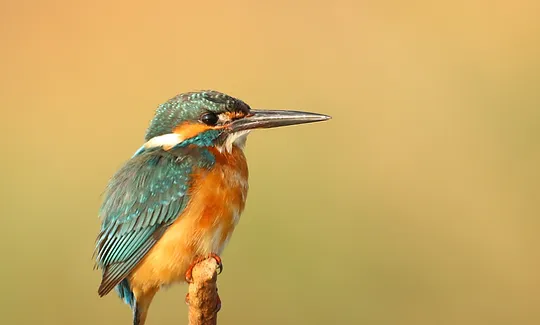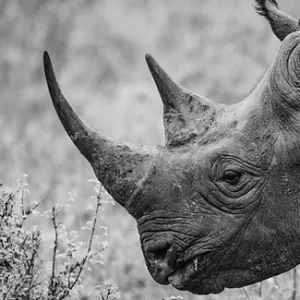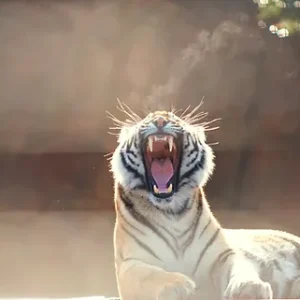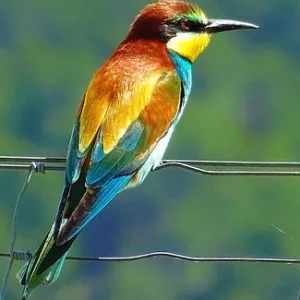Birds of North India
- 14 Nights / 15 Days
- Delhi – Jim Corbett National Park – Pangot – Almora – Agra –
Bharatpur – Delhi
Day 1 : Arrive in Delhi - The capital city!
Traditional welcome on arrival at Delhi international airport by Travel Pals India executive with fresh marigold flower garlands. Atithi Devo Bhava (Guest is god) is our 'mantra'. Day free to relax and acclimatize.
Delhi is the capital of the modern India, though it is made up of seven ancient cities, spanning over a period from 11th to 20th centuries.
Day 2: Delhi
Just before dawn walk across to the overlooking Delhi Ridge. The ridge is a northern extension of the ancient Aravalli Range, some 1500 million years old (compared to just 50 million for the Himalaya). Delhi Ridge is extending over 864 hectares of forest and protects Delhi from the hot winds of the deserts of Rajasthan to the west. It is also responsible for earning Delhi the tag of the world's second most bird-rich capital city, after Kenya's Nairobi.
1000 hrs, ready to enjoy a private guided tour of the capital city which highlights the great contrasts between Old and New Delhi. This includes visit to the magnificent Red Fort (exterior), the Jama Masjid - one of the Asia's largest mosque, enjoy the cycle rickshaw ride in the narrow by lanes of Old Delhi & Rajghat - the memorial to Mahatma Gandhi.
Followed by tour of New Delhi to include Humayun's Tomb, drive past through Rashtrapati Bhawan (Viceroy's House), Parliament Building and halt for a photo stop at India Gate - war memorial. End your day with a visit to Qutab Minar - 73 mt. tall minaret.
Day 3: Delhi
This early morning you will make your way to Sultanpur Bird Sanctuary which has been declared as a National park by the state government. Approximately 250 species of Birds are found here. Some of them are resident, while others come from distant regions like Siberia, Europe and Afghanistan. Some of the resident birds include: Common Hoopoe, Paddyfield Pipit, Purple Sunbird, Little Cormorant, Eurasian Thick-knee, Gray Francolin, Black Francolin, Indian Roller, White-throated Kingfisher, Spot billed Duck, Painted Stork, White Ibis, Black headed Ibis, Little Egret, Great Egret, Cattle Egret, India Crested Lark, Red vented Bulbul, Rose ringed Parakeet, Red wattled Lapwing, Shikra, Eurasian collared Dove, Red collared Dove, Laughing Dove, Spotted Owlet, Rock Pigeon, Magpie Robin, Greater Coucal, Weaver Bird, Bank Mynah, Common Mynah and Green Bee Eater etc.
Early evening visit to the Okhla Bird Sanctuary (Shaheed Chander Shekhar Azad Sanctuary) known as a haven for over 300 bird species, especially waterbirds. In 1990, an area of 3.5 square kilometers (1.4 sq mi) on the river Yamuna was designated a bird sanctuary by the Government of Uttar Pradesh under the Wildlife Protection Act, 1972. The bird species of thorny scrub, grassland and wetland are seen in the sanctuary due its location. In January 2011, as a part of Asian Waterbird Census 2011, a leucistic coot, known for its unusual bright white plumage, was spotted with the flock of common coots, for the first time in India. Okhla list includes:
•Two critically endangered species (white-rumped vulture and Indian vulture)
•Nine vulnerable species (Baikal teal, Baer’s pochard, sarus crane, sociable lapwing, Indian skimmer, Pallas’s fish eagle, lesser adjutant, bristled grassbird and Finn’s weaver)
•Seven near threatened species (ferruginous pochard, black-bellied tern, grey-headed fish eagle, erratically east to West Bengal and south to Kerala and Sri Lanka.
Day 4: New Delhi / Corbett (240 Kms / 5.5 hrs)
Late morning driven to Jim Corbett National Park with enroute comfort stops to stay in a jungle resort. Evening at leisure to enjoy the wilderness surroundings on own.
Jim Corbett National Park is the oldest national park in India established in 1936 as Hailey National Park to protect the endangered Bengal Tiger. Later named after Jim Corbett who played a key role in its establishment. This Park comprises 520.8 km2 (201.1 sq mi) area of hills, riverine belts, marshy depressions, grasslands and a large lake. It houses around 110 tree species, 50 species of mammals, 580 bird species and 25 reptile species.
Day 5: Corbett
Early morning jeep safari at Jim Corbett National Park to see Bengal Tiger Chances to sight the Leopards that are found in these hilly areas. Other mammals include barking deer, Sambar Deer, Hog Deer and Chital, Sloth and Himalayan Black Bears, Indian Grey Mongoose, Yellow-Throated Martens, Himalayan Goral, Langur and Rhesus macaques (commonly known as a Monkey). Owls and Nightjars can be heard during the night.
Return to hotel and have a relaxed breakfast. Option to enjoy a picnic (packed breakfast) inside the jungle at a midpoint.
Afternoon safari is also possible in case you are ready for a quick turn-around to witness the jungle action.
Day 6: Corbett
This morning takes a jeep safari into the park with an experienced naturalist in Gairal, Dhikala Zone, you have the opportunity to focus on bird life, or explore some of the areas more frequented with mammals.
Rest of the day free at leisure or walk around the park for bird’s sighting or explore the town with your driver.
Day 7: Corbett / Pangot (160 Kms / 4.5 hrs)
Today you will proceed to a place called bird paradise - Pangot for three nights.
Evening free to explore nearby of your resort as this lodge is bird paradise surrounded by forests with beautiful oak, pine and rhododendron trees. Dense vegetation characterizes a large part of the landscape. Numerous perennial streams cross the forest, attracting wildlife and birds.
Day 8: Pangot
A full day dedicated for birding at Pangot, Baggar, Timla Pani, Cheena Peak & Nainital area. There are high chances of spotting the following species. Common Hill Partridge, Rock Dove, Large-tailed Nightjar, Indian Cuckoo, Crested Serpent Eagle, Mountain Scops Owl, Himalayan Woodpecker, Great Barbet, Peregrine Falcon, Slaty-headed Parakeet, etc.
Day 9: Pangot
Continue a short drive to Sattal to try sighting varied species of birds such as: Great Barbet, Slaty-headed Parakeet, Brown Fish Owl, Emerald Dove, Spotted Dove, Jungle Myna, Red-rumped Swallow, Himalayan Bulbul Oriental White-eye, Brownish-flanked Bush Warbler, Grey-hooded Warbler, Black Bulbul & many more.
Day 10: Pangot / Almora (80 Kms / 3 hrs)
After a leisurely morning you will make your way towards ridge area at the southern edge of the Kumaon Hills of the Himalaya range - Almora.
Afternoon enjoy a walking tour to Mat village. A typical and prosperous Kumaoni village with slated roofs, wooden carved doors and windows and spacious courtyards. Watch villagers at their daily routine - working in the fields. Visit a Kumaoni home and have a steaming cup of Masala tea. Leisurely stroll (1 km) towards Kasar Devi temple (the original dating back to 2nd B.C.) and witness sunset overlooking the Kosi valley. After sundown driven back to resort.
Optional: Good Ayurveda therapy & yoga sessions are available at this resort.
Day 11: Almora / Binsar / Almora
Today you will enjoy visit Binsar Wildlife Sanctuary - Established in 1988 for the conservation and protection of the shrinking broad leaf oak (Quercus) forests of the Central Himalayan region, and it has over 200 bird species.
From there, hike to Jhandhidar (Zero point - 2410m) which commands one of the best Himalaya views in Kumaon. Then follow the ridge down to Shiva temple and turn right towards Gangarchina village. This is ridge walk partially through dense Oak and Rhododendron forests, hoary, old trees hung with lichen and covered with sweet smelling moss. The trail slopes gently downwards and offers lovely views into the Bhasoli valley on one side and on and off towards the Himalaya (5 to 6 hrs. walking). Reach Kangarchina and then driven back to resort (75 min. drive). A shorter walk / hike can also be suggested.
Day 12: Almora / Pantnagar (115 Kms / 3.5 hrs) / New Delhi (by air) / Agra (220 Kms/ 4 hrs)
Transferred to Pantnagar airport to board flight for New Delhi. On arrival at Delhi airport, Travel Pals executive will meet you and straight driven to Agra for overnight stay.
Day 13: Agra / Fatehpur Sikri / Bharatpur (65 Kms / 1.5 hrs)
Dawn visit to Taj Mahal with our guide, enjoy the spectacular views and witness the change in color while the sun rays falls on the white marble and glorifies the precious stones inlaid into the marble. One of the best views of Taj is during dawn with less people around.
Return to hotel for breakfast and proceed for guided visit to Agra Fort - built in red sandstone by Mughal Emperor Shah Jehan. Witness some of the breathtaking views of Taj Mahal set across beautifully by river Yamuna.
Further proceed for Bharatpur to stay in heritage palace, stopping en route for a private guided tour of the ancient deserted Mughal City of Fatehpur Sikri.
Day 14: Bharatpur
Meet your pre-appointed naturalist for a visit to the Keaoladeo Bird Sanctuary on a cycle rickshaw ride. The sanctuary was established in 1956. This 29 sq km marshland is one of the finest bird sanctuaries in the world with over 360 species of birds, out of which 117 are the local birds. Now a UNESCO World Heritage site, it used to be a part of the private shooting reserve of the Maharaja of Bharatpur. Among many bird species to be seen here are storks, ducks, Chinese coots, kingfishers, spoonbills, sarus cranes and several birds of prey, including falcon, marsh harrier and eagle. Alone 80 species of ducks can be spotted here.
Early evening enjoy a conducted village walk to experience the rural Indian life. This is the root of Incredible India!
Day 15: Bharatpur / New Delhi (210 kms - 4.5 hours) - Back home
Today morning/ afternoon, driven to Delhi international airport to board flight for onward destination with sweet memories of your India tour.
Maps
Cost Details
Hotels
3 star Hotels
Lorem Ipsum has been the industry’s standard dummy text ever since the 1500s, when an unknown printer took a galley of type and scrambled it to make a type specimen book. It has survived not only five centuries.
4 star Hotels
Lorem Ipsum has been the industry’s standard dummy text ever since the 1500s, when an unknown printer took a galley of type and scrambled it to make a type specimen book. It has survived not only five centuries.
Luxury Hotels
Lorem Ipsum has been the industry’s standard dummy text ever since the 1500s, when an unknown printer took a galley of type and scrambled it to make a type specimen book. It has survived not only five centuries.
Cars
Cedan
Lorem Ipsum has been the industry’s standard dummy text ever since the 1500s, when an unknown printer took a galley of type and scrambled it to make a type specimen book. It has survived not only five centuries.
SUVs
Lorem Ipsum has been the industry’s standard dummy text ever since the 1500s, when an unknown printer took a galley of type and scrambled it to make a type specimen book. It has survived not only five centuries.
Luxury
Lorem Ipsum has been the industry’s standard dummy text ever since the 1500s, when an unknown printer took a galley of type and scrambled it to make a type specimen book. It has survived not only five centuries.
Guide Details
Lorem Ipsum has been the industry’s standard dummy text ever since the 1500s, when an unknown printer took a galley of type and scrambled it to make a type specimen book. It has survived not only five centuries.
COST
₹50.00







Reviews
There are no reviews yet.